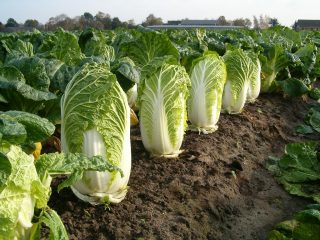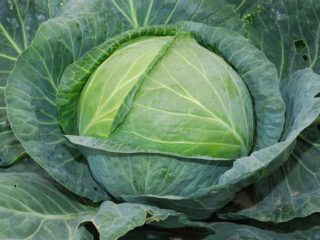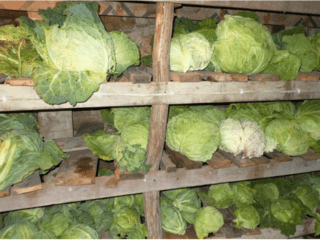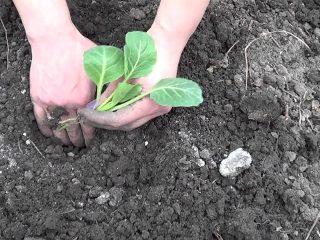Content
Black leg in cabbage seedlings appears due to high humidity and is spread through infected seeds or soil. To combat it, fungicides, biological preparations and, less commonly, folk remedies are used. The main methods of treatment and prevention are described in the article.
Symptoms of the lesion
Cabbage blackleg is an infectious disease caused by bacteria (in Latin they are called Peсtobacterium), as well as fungi (for example, Olpidium brassicae). It is sometimes also called black rot because the attack causes plant stems to rot and soften and then die.
The main signs of the disease are:
- the root collar becomes black;
- she is rotting;
- becomes thinner;
- plants lag behind in development;
- In case of massive damage, seedlings die quite quickly.
Reasons for appearance
You can identify black leg in cabbage seedlings by its characteristic symptoms (pictured). At the same time, it is important to understand the causes of this pathology.The most common factors include:
- High humidity levels. Most often it is associated with a violation of the watering norm, so you need to monitor this especially carefully.
- Weather conditions are warm combined with frequent rains.
- Blackleg also affects cabbage if the planting is too dense.
- Excessive nitrogen fertilization.
- Too sharp and frequent temperature changes, drafts (when growing at home).
- Infected seeds or soil from the previous season.
- Lack of ventilation and loosening.
- The soil is too acidic. If the pH is less than 5.5, it is necessary to fertilize with dolomite flour or wood ash.
Thus, there are many reasons for the appearance of black leg on cabbage seedlings. Most often they are associated with improper care, for example, excessive watering, lack of pre-planting treatment of seeds and soil. On the other hand, the disease can affect seedlings and adult plants even with good care. If the climate is too humid and temperature changes are often observed, it is better to grow the crop in a greenhouse or greenhouse.
Signs of illness
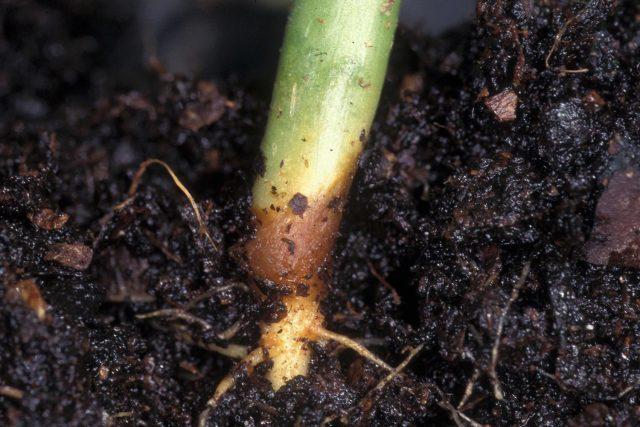
Black leg appears both in cabbage seedlings and in relatively mature seedlings
The disease affects plants in two stages:
- At the moment of appearance of cotyledons or the first 2-3 true leaves.
- After transplanting seedlings into a greenhouse or open beds.
In both cases, the signs of damage to cabbage seedlings by blackleg are approximately the same. But there are certain differences, which are described in detail in the following sections.
On seedlings
If blackleg has affected cabbage seedlings, identifying the signs is quite simple. Young seedlings are noticeably lagging behind in development, the stems soften and become watery.And not along the entire length, but specifically in the root zone, i.e. in the cervical area.
They quickly rot and then become thinner. Therefore, the sprouts bend towards the ground and begin to die en masse, even with good care. The black leg of the seedlings is spreading to neighboring cabbage plantings. Because of this, almost all plants stop developing.
On mature bushes
If the black leg has not affected the seedlings, but the adult cabbage, the main signs are as follows:
- thinning of the basal region of the cervix;
- blackening;
- the stems begin to dry out;
- plants lag behind in development, but do not die;
- cabbage heads are often formed;
- however, the sides of the fork, like the leaves, begin to rot;
- they wither and die;
- swellings form on the surface of the leaf blades - the fruiting bodies of fungi.
Why is blackleg dangerous?
The causative agent of blackleg in cabbage seedlings is dangerous because it is very active. At the seedling stage, mass infection is often observed, which is why almost all seedlings die.
Another risk is that the disease is difficult to treat. And if it has gone into advanced form, it will not be possible to cope with it. Therefore, it is easier to prevent the development of the disease than to deal with the consequences.
It is important to understand that the pest affects not only cabbage seedlings, but also other plants. In addition, it will probably remain in the soil. Therefore, such soil should be disinfected or frozen. Otherwise, large crop losses will be observed from year to year.
Fighting black leg on cabbage seedlings
There are different ways to combat black leg on cabbage seedlings. First of all, it is recommended to remove all affected plantings, since they will most likely infect healthy plants. Next, treatment should be carried out with special preparations.How to act in different cases is described in detail in the following sections.
Agrotechnical methods
First of all, to prevent and control blackleg on cabbage seedlings, it is necessary to follow cultivation techniques. Seedlings should be planted at a distance of at least 3 cm. After 2-3 true leaves appear, they must be pruned or thinned out.
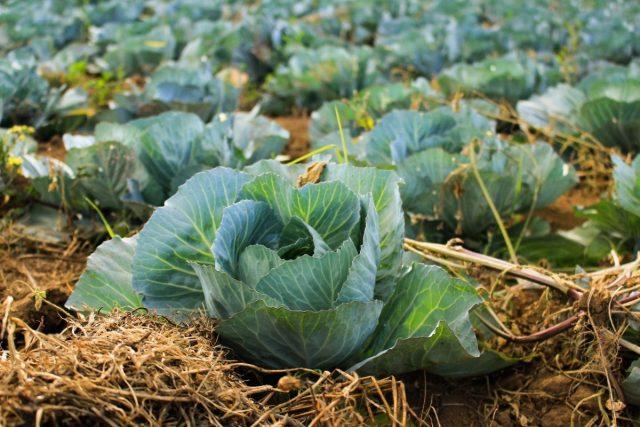
Cabbage should not be grown in the same place for more than three years in a row.
When planting in open ground, follow a pattern of at least 40*40 cm. Another common option is 40 cm between seedlings and 50 cm between rows. It is better to plant in a checkerboard pattern, then all plants will be evenly illuminated.
It is also important to understand that cabbage should not be planted in a field where any representatives of cruciferous plants have grown for several years in a row. This is cabbage itself of any variety, as well as radishes, radishes and other crops.
Biological agents
If at the seedling stage any preparations can be used against the black leg of cabbage, then only biological preparations must be used during the setting of heads of cabbage. The most effective include:
- "Fitosporin";
- "Trichodermin";
- "Baktofit";
- "Gapsin";
- "Effect";
- "Gamair" and others.
Chemicals
Measures to combat black leg of cabbage seedlings include treatment with chemicals, for example:
- "Fundazol";
- "Energodar";
- "Polycarbacin";
- Previkur Energy;
- "Zineb";
- "Daconil."
Folk remedies
You can also fight the black leg of cabbage seedlings using folk remedies.They are used at an early stage of disease development, as well as in cases when the plants have already begun to set heads. The main methods are:
- Treat the soil surface and seedlings with vodka diluted 10 times with water.
- Spray the plants and soil with infusion of onion peels (2-3 times with an interval of 5 days). To prepare, take 100 g of husk, add a liter of boiling water and leave for 24 hours. Then they filter and begin processing.
- Spray with wood ash infusion. You will need 20 g of powder per 1 liter of water.
- Prepare an infusion of marigold flowers - 500 g per 10 liters of boiling water. Leave for two days, strain and process the cabbage.
Preventive measures
Since it is difficult to treat cabbage blackleg, and in the case of seedlings it is almost impossible, it is recommended to take preventive measures. They are simple, but significantly increase the effectiveness in the fight against the disease.
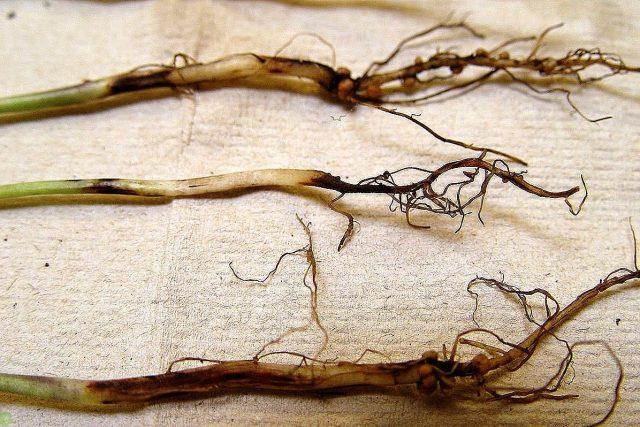
For prevention, it is necessary to disinfect the soil and seeds
Soil disinfection
To disinfect the soil before planting seedlings, there are several ways:
- Pour a solution of potassium permanganate at a concentration of 2-3 g per 1 liter. This is a powerful antiseptic that destroys both fungi and bacteria.
- Keep in the freezer for several days.
- Pour in a solution of “Fundazol” or another fungicide (prepare according to instructions).
- If you don’t have time, keep it in the oven for 15-20 minutes at 120 degrees.
Regardless of the chosen disinfection method, not only harmful but also beneficial soil bacteria are destroyed. Therefore, after treatment, it is recommended to apply bacterial fertilizer. This may be “Rizotorfin”, “Azobacterin”, “Phosphorobacterin” and others.
Seed disinfection
Along with soil disinfection, it is recommended to treat the seeds to prevent blackleg in cabbage seedlings. For this purpose, for example, the drug “Planriz” is used. It is diluted according to the instructions (concentration 1%) and the seeds are treated a day before sowing.
They also use the product “Fitosporin” - add only four drops to a 200 ml glass of water and treat the seeds for two hours immediately before planting. Another way is to use potassium permanganate (1 g per 1 l). The product is quite powerful, so you can keep the seeds in the solution for no more than 25-30 minutes.
Processing of seedlings
One of the effective ways to prevent blackleg is to treat cabbage seedlings with special means:
- "Fitosporin" (diluted according to instructions). Spraying should be done after germination, as well as immediately after transplanting into open ground or a greenhouse.
- A mixture of 5 kg mullein with 1 kg clay per 10 liters of water. The roots of seedlings are treated with this solution during transplantation into open beds.
- You can also sprinkle the cabbage roots with wood ash powder, mixing it with sand. This is especially effective in acidic soils as it helps level the pH to 6-7 (acceptable values for most plants).
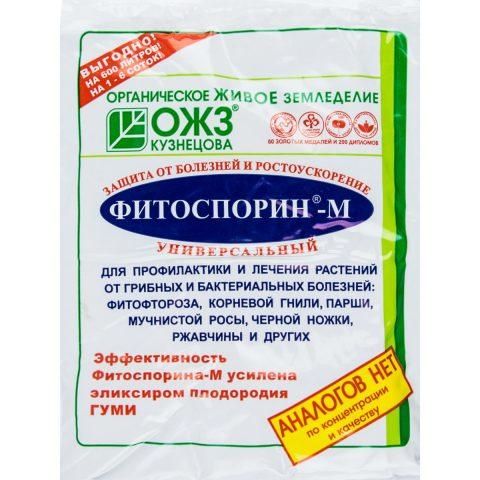
"Fitosporin" is one of the fungicides for the prevention and treatment of blackleg
Other measures
Also, to prevent black leg of cabbage, you should follow other rules for caring for seedlings:
- Be sure to follow the watering norm at the stage of growing seedlings. You should not over-moisten the soil - giving water three times a week is quite enough, i.e. in the “every other day” mode.
- After transplanting cabbage seedlings into open ground for prevention, they are also not watered too often - about twice a week, and if there is rain, water is not given.
- If the climate is unfavorable, there are often temperature changes and rain, it is recommended to plant seedlings not in open ground, but in a greenhouse.
- To prevent blackleg, seedlings must be ventilated. The film is periodically opened, and after the emergence of shoots it is finally removed.
- The soil is periodically loosened and weeded if necessary. This is especially important after watering and applying liquid fertilizers.
- If there is a suspicion that the soil is too acidic, it is recommended to first measure the pH. This can be done using indicator paper or a pH meter. If the indicator is less than 5.5, wood ash or dolomite flour (150-200 g per 1 square meter) must be added to the soil.
- When growing in a greenhouse, the room also needs to be ventilated periodically, especially after watering. If the temperature does not drop below +14 at night, it is left open around the clock.
Conclusion
Blackleg in cabbage seedlings is a rather dangerous disease that can lead to the death of all seedlings. To prevent this from happening, it is recommended to disinfect the soil and treat the seeds in advance. It is also important not to violate the watering norm, regularly ventilate the greenhouse and greenhouse for seedlings.
